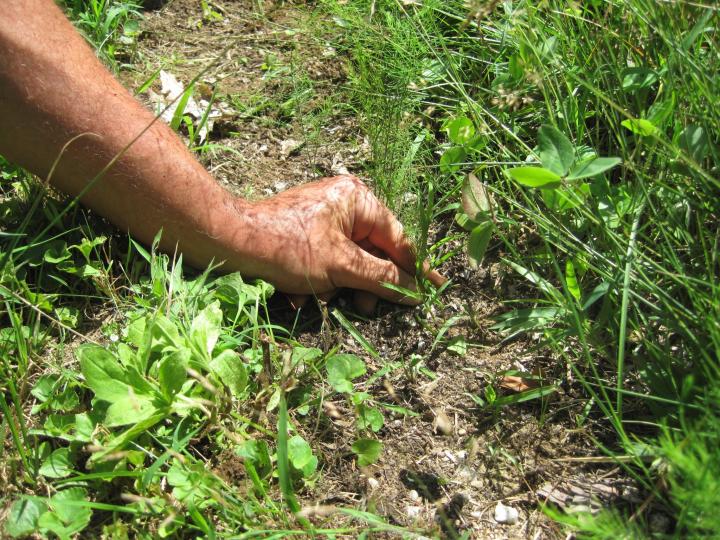Summertime in the Veggie Garden
Growing a garden isn't just about getting plants started—it also involves tending to your plants and giving them the TLC that they need to be successful and get across that finish line! Here are my tips on summer plant care . . .
Don't Let Weeds Take Over
Weeding and thinning should be at the top of your to-do list. Plants can't grow well if they are being crowded out, and weeds are especially tough competitors.
- Take a half hour early each morning while it is still cool outside to pull any weeds that have invaded your garden.
- You can attack it methodically row by row, or go for the big guys first and work your way down to the smaller offenders.
- If you keep at it, eventually there will be few or no weeds left, at which point you can easily keep up with newly emerging ones.

Thin Out Plantings
If you started some early or mid-summer plantings of beets or carrots, it's time to give them room to form their fat roots.
- I usually try for a spacing of two finger-widths between plants.
- Eat any tiny carrots that have formed. They are exceptionally sweet and good in a salad, and the beet greens are delicious and full of nutrients.
Fertilize for a Boost!
Plants, like people, need to not only drink water but also eat for nourishment! By now, their soil may be getting depleted of nutrients.
Give plants a mid-season feeding by side-dressing with compost or aged manure, or give them a drink of liquid fish emulsion fertilizer or manure tea when you water.
Watering is Critical
Watering is critical in mid- and late summer, when the heat is on high. Put out a rain gauge to determine just how much water you are getting from those thunderstorms: one to two inches a week is optimum. If you are not getting that much in rainfall, it is time to do some deep watering yourself.
- Dig down about 6 inches and see how dry the soil is at that level. This is where most of your plants roots are and this is where the water needs to be.
- Sprinkling the leaves is not going to be very beneficial. Soaker hoses are best; otherwise you will have to spend some time watering around each plant.
- Water gently to allow the water to soak in and not run off. (See our article about Watering.)

A simple rain gauge will take some of the guesswork out of watering.
- To reduce the amount you need to water, consider mulching around your plants, which will help to keep down the weeds and keep soil moisture from evaporating too quickly. Straw, grass clippings, pine needles, shredded leaves, and even newspaper will help to suppress weeds. (See our article about Mulch.)

Time to replace bolted heads of bitter lettuce with fresh new plantings.
Plant New Vegetables
Planting a new round of crops will keep your garden productive into fall. Remove any spring crops that have gone to that big farm in the sky and plant some new vegetables in that space.
- Pay close attention to the first fall frost date for your area if you want to replant with tender, warm-weather crops like beans or cucumbers.
- Otherwise, stick to frost-hardy fall crops such as broccoli, kale, bok choy, carrots, beets, radishes, turnips, spinach, and peas.
- Lettuce doesn't like to germinate in hot soil, so start the seeds inside where it is cooler and then transplant them outside under the shade of taller plants to keep the lettuce from bolting.
